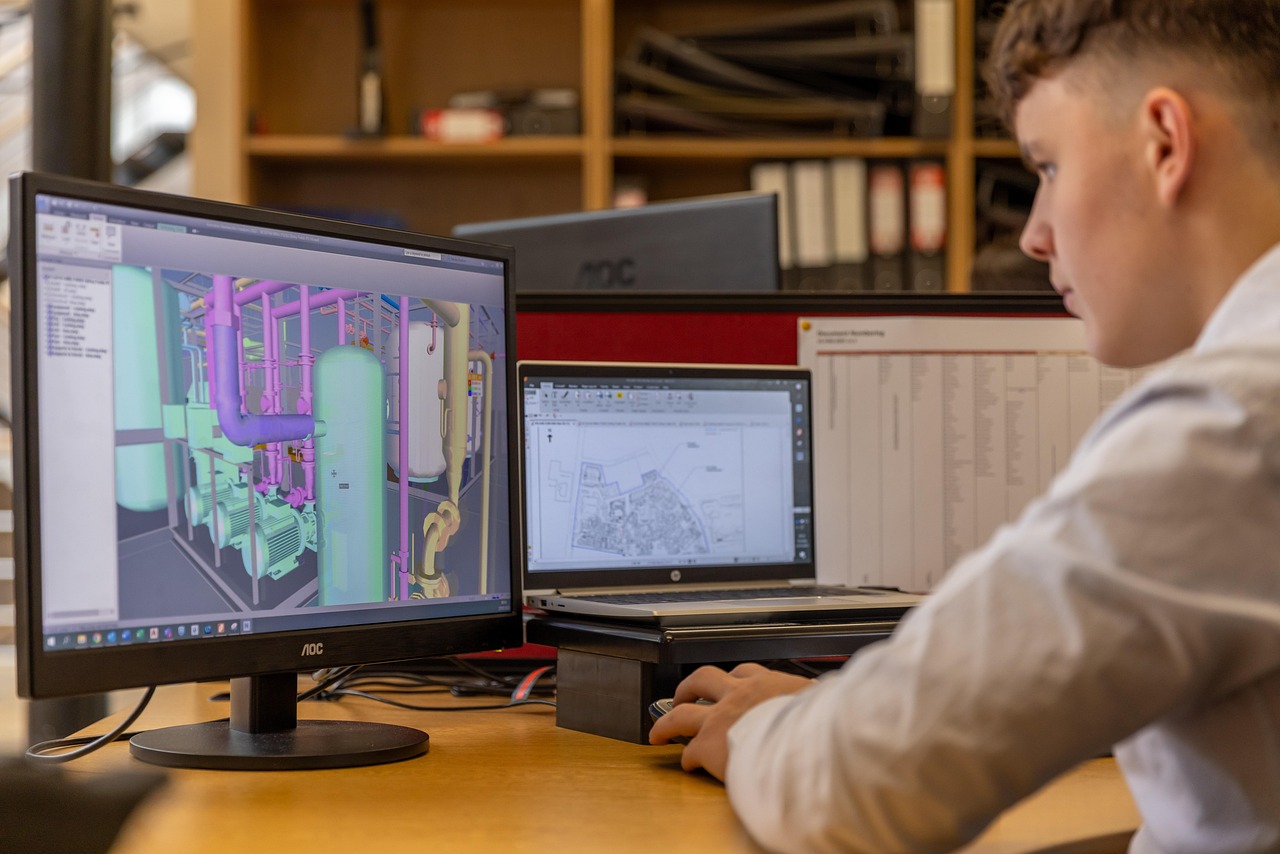The Problem: Why CAD Alone No Longer Fits 2026 Workflows
CAD (Computer-Aided Design) has been the backbone of digital drafting for decades. Yet as projects have become more complex, the limits of traditional CAD have become clear. Each 2D drawing or 3D model stands alone, meaning any design change must be updated manually across multiple files — a slow, error-prone process that increases coordination risk.
Meanwhile, BIM (Building Information Modeling) has emerged as the industry standard. The global BIM market is projected to exceed $15 billion by 2028, growing more than 13% annually. BIM isn’t just 3D modeling; it’s a connected, data-rich workflow that links every element of a project — geometry, specifications, materials, and performance data — in one intelligent model.
CAD creates drawings. BIM builds information.
According to the National Institute of Building Sciences, firms using BIM experience up to 40% fewer project changes and 10% reductions in contract value through early clash detection and model coordination. These numbers reflect a growing reality: the industry has moved beyond CAD.
The Solution: How to Migrate from CAD to BIM
Transitioning from CAD to BIM isn’t a software swap — it’s a strategic transformation of how teams design, collaborate, and deliver projects.
Below is a proven roadmap that firms can follow to manage the process systematically.
1. Assess Where You Stand
Every migration starts with clarity.
- Audit current projects and identify which would benefit most from BIM.
- Evaluate staff skills and digital readiness.
- Check whether your hardware meets BIM software requirements (16GB+ RAM, SSD storage, modern graphics).
- Review client expectations — many now mandate BIM deliverables.
Document this baseline. It becomes your roadmap for planning costs, training, and rollout.
2. Build a BIM Implementation Plan
Treat migration like a major project. Your plan should include:
- Objectives: What outcomes do you expect — faster documentation, reduced errors, improved coordination?
- Timeline: A gradual transition over 12–18 months with pilot projects before firm-wide rollout.
- Budget: Include software, training, hardware, and reduced productivity during the learning curve.
- Risk Planning: Identify potential setbacks and assign mitigation steps early.
A 20-seat firm typically invests $100K—$200K in training and consulting to transition successfully.
3. Choose the Right BIM Platform
Your choice of software depends on your project type and client base.
| Platform | Best For | Notes |
| Autodesk Revit | Building design & documentation | Most common in North America; 60%+ market share. |
| Graphisoft ArchiCAD | Architecture & design visualization | Intuitive interface; strong design flexibility. |
| Bentley Systems | Infrastructure & civil projects | Ideal for transportation and utilities. |
Supporting tools like Navisworks (coordination), BIM 360/ACC (collaboration), and Dynamo (automation) enhance team productivity.
4. Train for Success
The most common pitfall isn’t software — it’s undertraining.
- Formal Courses: Provide 40–80 hours of structured instruction per team member.
- Internal Champions: Develop 2–3 advanced users who mentor others.
- Pilot Projects: Apply new skills on a small, low-risk project.
- Ongoing Learning: Schedule refresher courses annually to keep skills current.
- Knowledge Sharing: Encourage peer learning through short internal sessions.
Firms that treat BIM training as an investment, not an expense, see the fastest payback.
5. Set BIM Standards Early
Without structure, BIM’s data richness can quickly become chaotic. Establish consistent standards across all teams:
- Naming Conventions: Uniform file and sheet names.
- Level of Development (LOD): Define expected detail by project phase.
- File Management: Store models centrally with version control (e.g., BIM 360).
- Quality Control: Schedule model reviews to maintain accuracy.
Document everything in a BIM Execution Plan (BEP) — your internal playbook for collaboration.
6. Run a Pilot Project
Choose a pilot project that’s meaningful but manageable.
- It should represent your typical work and have a client open to collaboration.
- Expect a 20–30% longer timeline for your first BIM project.
- Track lessons learned — these will refine your standards and workflows.
- Celebrate wins, like early clash detections or automatic schedules that save time.
The pilot phase is not about speed; it’s about mastery.
7. Expand Firm-Wide
Use pilot insights to scale strategically:
- Transition one team at a time.
- Start all new projects in BIM; finish legacy ones in CAD.
- Establish hybrid protocols for interoperability during the overlap phase.
- Track metrics such as documentation time, coordination errors, and profitability.
8. Build a BIM-Positive Culture
Long-term success depends on mindset as much as tools. Encourage leadership buy-in, reward innovation, and promote open collaboration across disciplines. Create a culture that values experimentation and continuous improvement — because BIM isn’t a product; it’s a process.
The Payoff: Results, ROI, and the Road Ahead
Measuring Success
Track progress using five key metrics:
- Documentation speed
- Error reduction
- Client satisfaction
- Win rate
- Profitability
After full adoption, firms report 20–40% faster documentation and up to 90% fewer coordination issues — savings that compound project after project.
Avoiding Common Pitfalls
| Mistake | Better Approach |
| Rushing implementation | Use a phased, measured rollout. |
| Underestimating training | Budget generously for education. |
| Choosing poor pilot projects | Start with something representative, not risky. |
| Ignoring change management | Communicate and involve skeptics early. |
| Treating BIM as “3D CAD” | Emphasize data intelligence and integration. |
Beyond BIM: The Next Digital Frontier
Once BIM is established, firms can evolve further:
- Digital Twins – Integrate real-time building data for ongoing operations.
- AI & Automation – Predict performance and streamline repetitive tasks.
- AR/VR Visualization – Enhance client presentations and design reviews.
- Sustainability Analysis – Model energy and environmental performance live.
Each innovation builds upon the BIM foundation. Firms that migrate now position themselves for the next decade of transformation.
Conclusion: Building the Future of Design
The CAD vs BIM debate is over. BIM is the common language of modern architecture, engineering, and construction. Firms that act today gain a long-term competitive edge by improving accuracy, collaboration, and profitability.
The future of design isn’t just 3D — it’s intelligent, connected, and data-driven.

